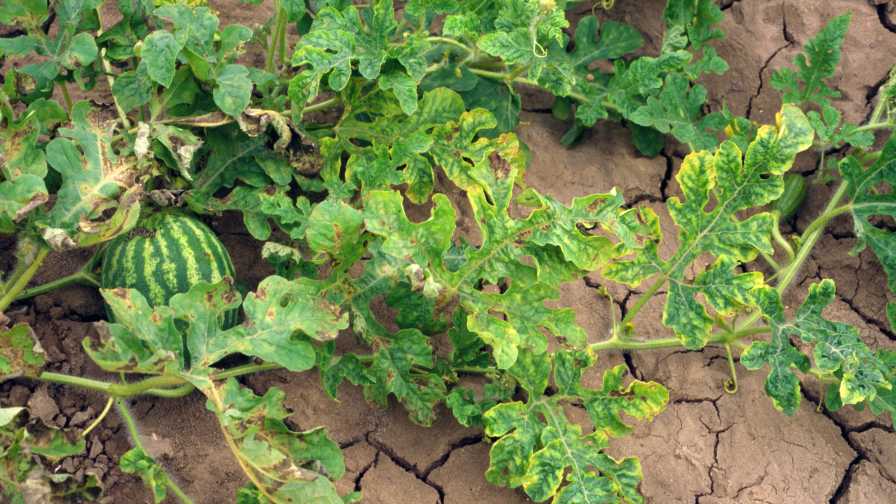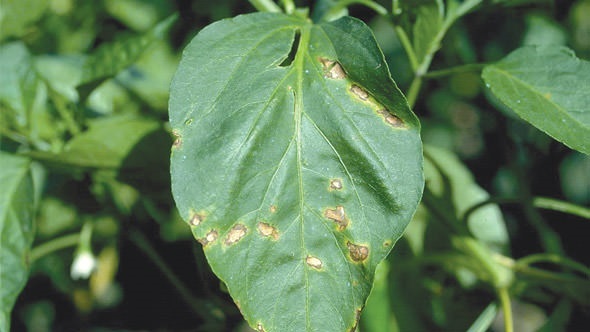Take Caution to Curb Cucurbit Leaf Crumple Virus

Photo by David Riley
Disease Specs
Cucurbit leaf crumple virus is a begomovirus that was first reported in squash in Florida in 2006. It hit watermelon growers around Southwest Florida especially hard this past spring.
Identification
Cucurbit leaf crumple virus (CuLCrV) usually starts in small patches in the field with new leaves showing yellowing. The yellowing pattern is unique and in early stages of infection appears between the veins.
As the disease progresses, the yellowing of the leaves will spread to the leaf margin. A tell-tale symptom of CuLCrV infection is crumpling of the leaves. Eventually, leaves develop unusual twisting combined with thickening, crumpling, and yellowing.
New leaves on runners can be severely infected with crumpling, which is readily noticeable. Unlike squash, which is severely damaged, watermelon plants may seem to recover from infection only for symptoms to rebound.
On yellow squash and zucchini, symptoms include thickened and distorted leaves, which become curled and crumpled in appearance. Zucchini fruit do not show obvious symptoms, but the fruit of yellow squash become streaked with green, making them unmarketable.
Survival and Spread
CuLCrV can infect most cucurbits and also is known to infect beans. As with other begomoviruses, this virus is transmitted in a persistent manner by the silverleaf whitefly, Bemisia tabaci. Whiteflies must feed for a minimum of 30 minutes on an infected plant and can only transmit the virus after a delay of 6 to 8 hours. Once the whitefly can transmit the virus, it can continue to do so for days.
The disease is common in areas where both horticultural and agronomic crops are grown close to each other, especially if there is poor whitefly management on any of these crops.
The virus cannot be transmitted mechanically and is unlikely to be transmitted through seed.
Management Methods
Management of CuLCrV is like the management of other begomoviruses. Virus and whitefly-free transplants should be used. Growers should avoid planting near older, whitefly-infested crops. Use of UV-reflective mulches, which repel migrating whiteflies in the first few weeks of the crop, can help delay the introduction of virus. Fields should be maintained weed-free, as they can be hosts for whiteflies, and can interfere with thorough coverage of insecticides applied for whitefly control.
Soil and drip-applied systemic insecticides are important tools for providing early and mid-season protection from whiteflies. A treatment window of 4 to 5 weeks should be used to plan insecticide rotations for whitefly management. For example, cucurbits could be treated at planting with Verimark (cyantraniliprole, DuPont), followed by a foliar application of Exirel (cyantraniliprole, DuPont) a few weeks later. A neonicotinoid could be applied through the drip at week five followed by a foliar application of Sivanto (flupyradifurone, Bayer CropScience).
Insect growth regulators Knack (pyriproxifen, Valent U.S.A.) and Courier (buprofezin, Nichino America) will reduce the number of viable whitefly eggs and prevent nymphs from completing development. Biopesticides, including insecticidal soap and Beauvaria bassiana, can help reduce whitefly numbers when used repeatedly.










